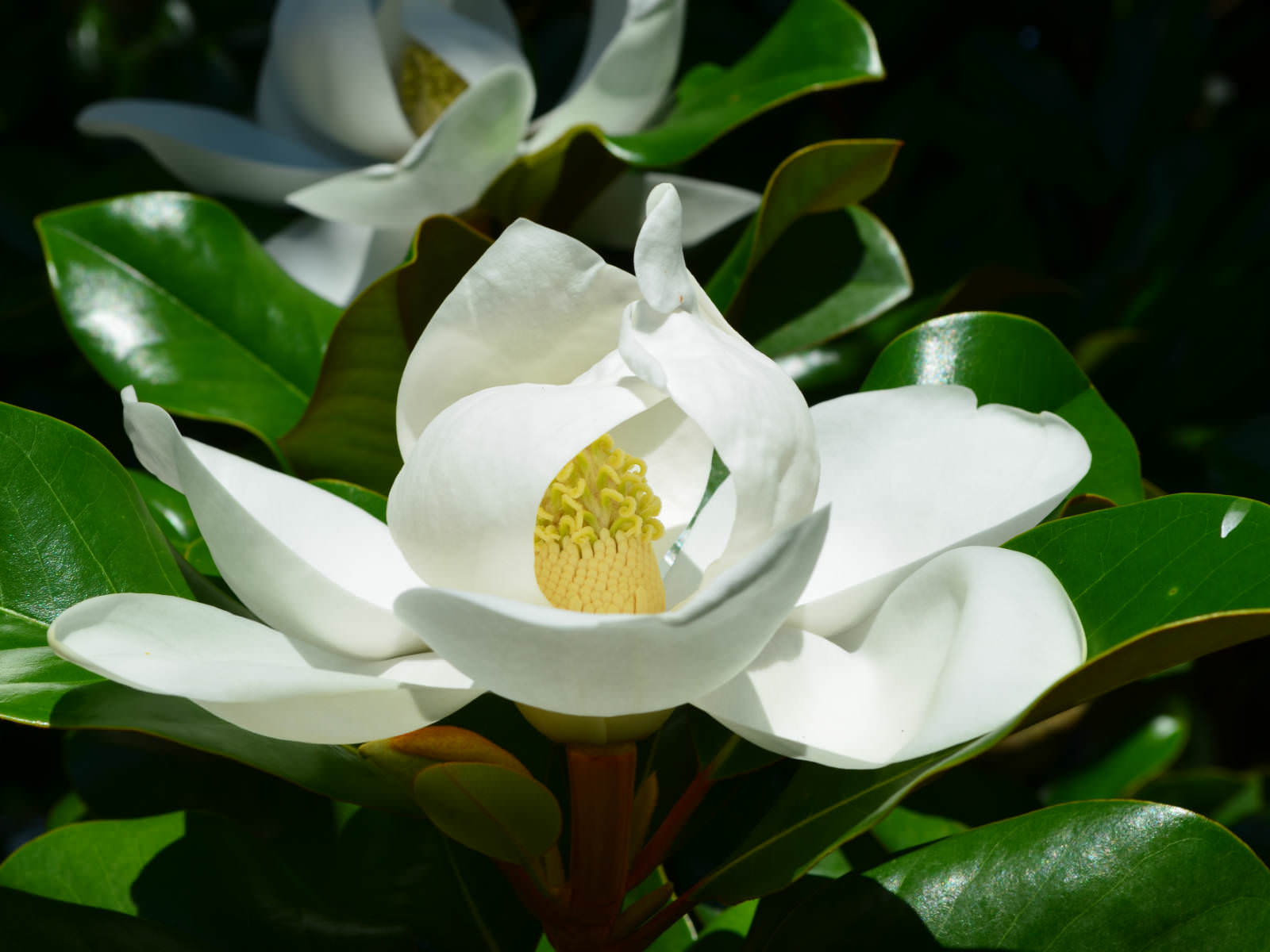
Magnolia grandiflora (Southern Magnolia) World of Flowering Plants
Magnolias come in all shapes and sizes, but perhaps the most well-known magnolia in Florida is the Southern magnolia, Magnolia grandiflora. These stately trees can grow up to 90 feet tall, depending on the cultivar, and have lustrous, evergreen foliage that makes a great backdrop for other garden plants. In the spring and summer, Southern.

Southern Magnolia (magnolia Grandiflora) Photograph by Brian Gadsby/science Photo Library
Southern magnolia (Magnolia grandiflora), also called evergreen magnolia, bull-bay, big-laurel, or large-flower magnolia, has large fragrant white flowers and evergreen leaves that make it one of the most splendid of forest trees and a very popular ornamental that has been planted around the world.
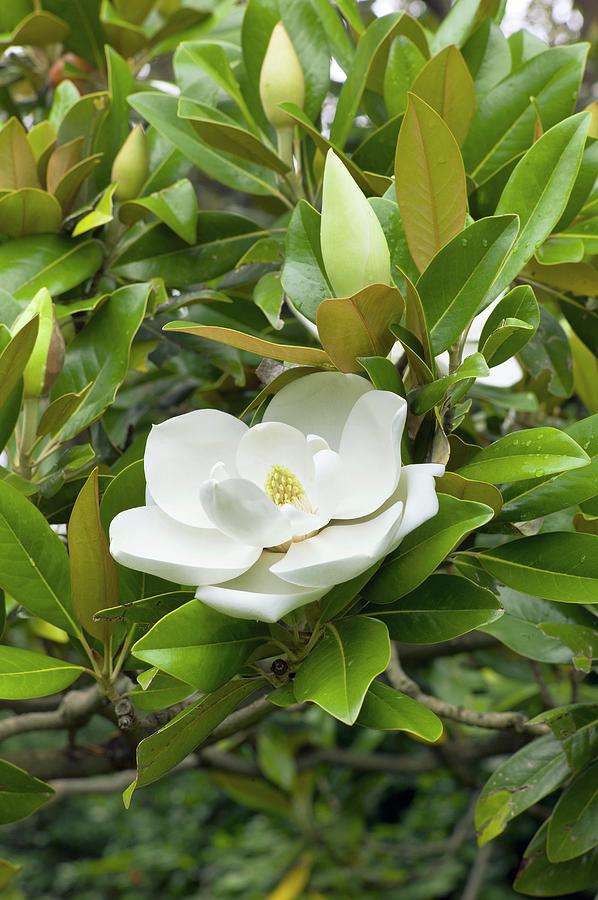
Southern Magnolia (magnolia Grandiflora) Photograph by Dr Jeremy Burgess/science Photo Library
Capable of growing at a moderate rate to a height of 80 feet or more with a 30 to 40-foot spread, Southern Magnolia forms a dense (more open in the shade), dark green pyramidal shape, the lower branches often bending to the ground. However, form and growth rate on seedlings is incredibly variable.

Plant Profile Southern Magnolia (Magnolia grandiflora)
Magnolia grandiflora, otherwise known as the Southern magnolia or Bull Bay, is an evergreen species of flowering trees in the Magnoliaceae family. This appealing plant grows natively in several regions of the southeastern United States. You can find it from central Florida to Virginia, and west to East Texas.

Plant Profile Southern Magnolia (Magnolia grandiflora)
Southern magnolias are native to the Southeastern United States, from Virginia south to central Florida, and then west to East Texas. The tree is found on the edges of bodies of water and swamps, in association with sweetgum ( Liquidambar styraciflua ), water oak ( Quercus nigra ), and black tupelo ( Nyssa sylvatica ).
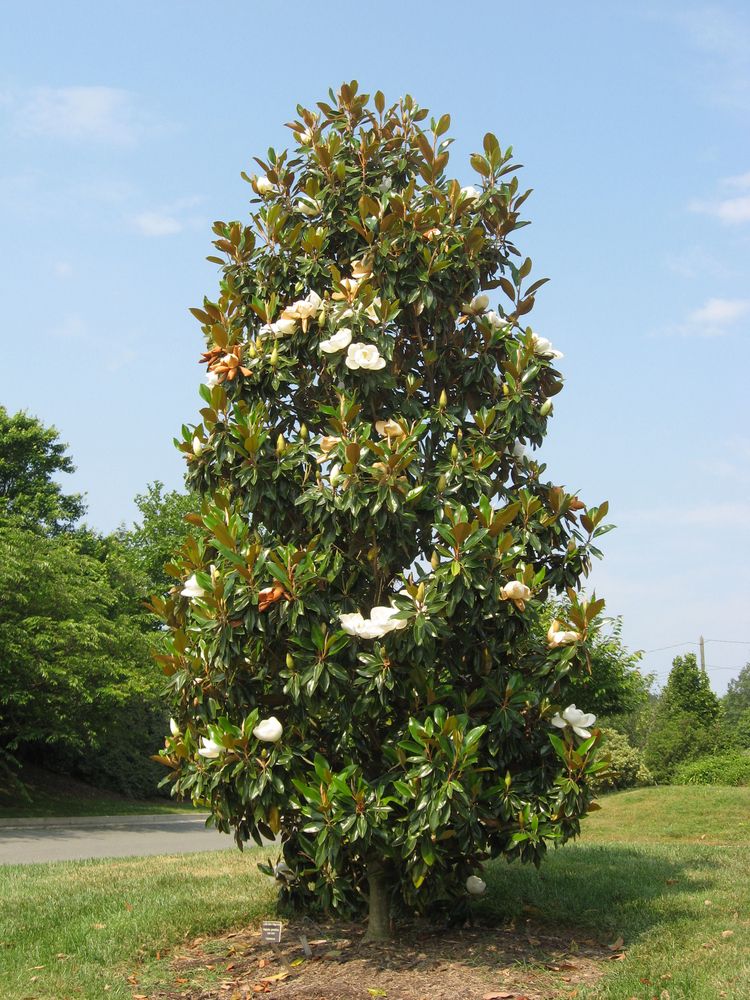
Magnolia grandiflora Southern Magnolia Plant Photos & Information
Capable of growing at a moderate rate to a height of 80 feet or more with a 30 to 40-foot spread, southern magnolia forms a dense (more open in the shade), dark green pyramidal shape, the lower branches often bending to the ground. However, form and growth rate on seedlings is incredibly variable.
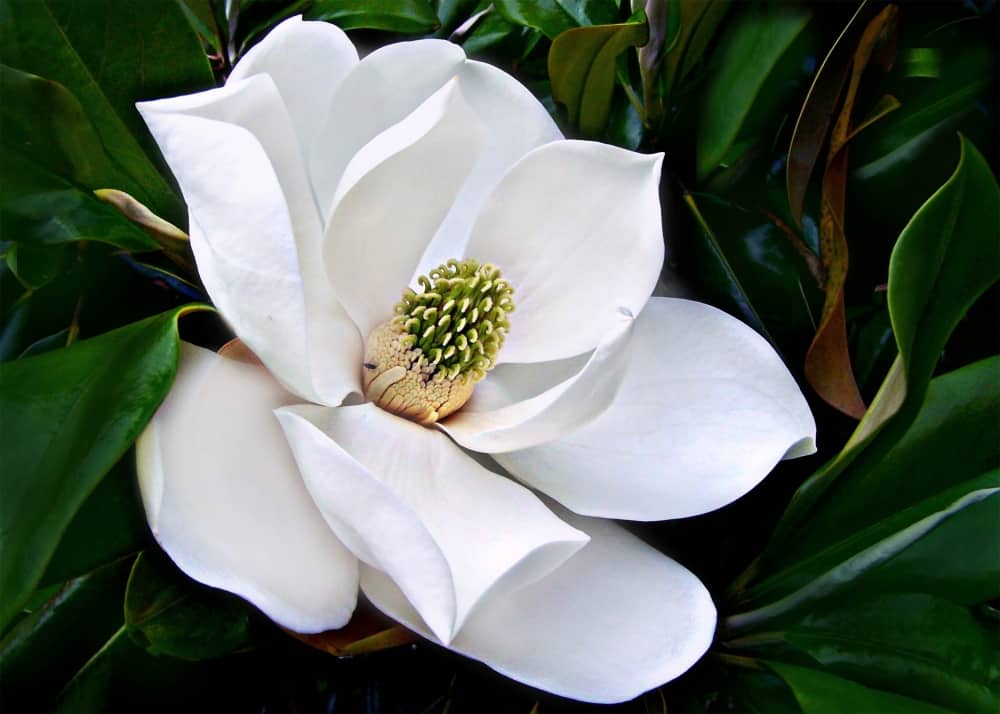
Magnolia Grandiflora Tree, Southern Magnolia White Flower, Starter Plant Sandy Nursery Online
Magnolia grandiflora L. southern magnolia. Magnolia grandiflora L. southern magnolia. Description of Values. Value Class Food Cover; High: Average 25-50% of diet: Regular source of cover: Low: 5-10% of diet: Infrequently used as cover: Minor: 2-5% of diet: Sparsely used as cover: Moderate: Average 10-25% of diet:

Southern Magnolia (Magnolia grandiflora)
58 Family: Magnoliaceae Genus and species: Magnolia grandiflora Description: The southern magnolia, a tree indigenous to the southeastern United States but sporadically found all along the East coast, is a broadleafed evergreen.
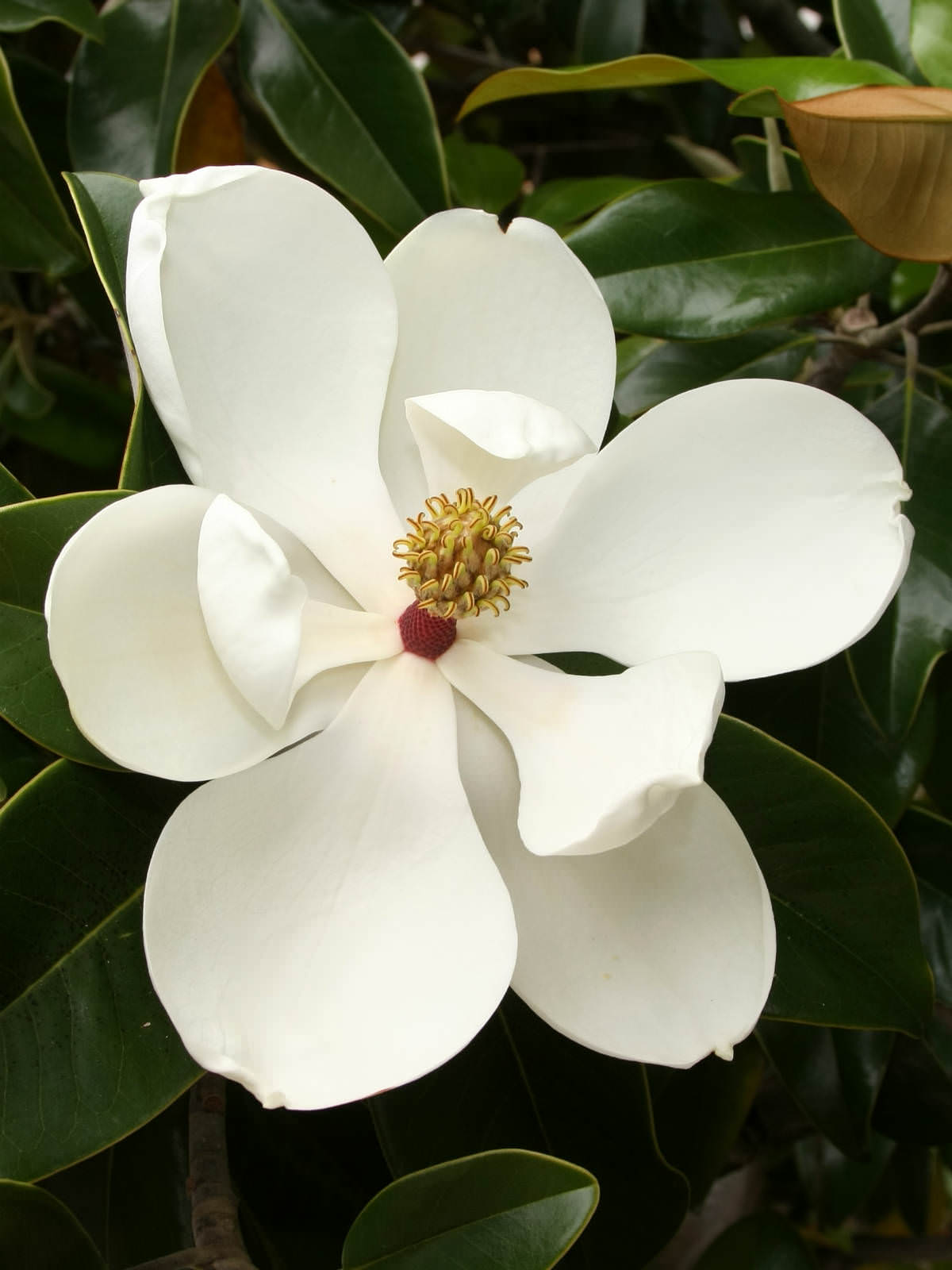
Magnolia grandiflora (Southern Magnolia) World of Flowering Plants
Regarded as one of the best evergreen magnolias, Magnolia grandiflora 'Kay Parris' (Southern Magnolia) is a compact, robust evergreen tree with a straight trunk and a pyramidal to rounded crown. Huge, heavily scented, creamy-white flowers, 8-10 in. across (20-25 cm), appear at the tips of thick, tough stems in late spring, throughout the summer, and into fall.

Magnolia grandiflora 'Kay Parris' Dwarf Southern Magnolia Mid Valley Trees
A regular Southern magnolia (Magnolia grandiflora) gets big—about 60- to 80-feet tall and 30- to 40-feet wide. That's too big for a small yard. Even if you remove the lower branches, its dense shade and surface roots make growing grass beneath it impossible. And a big tree drops leaves—not just in fall the way deciduous trees do, but every.
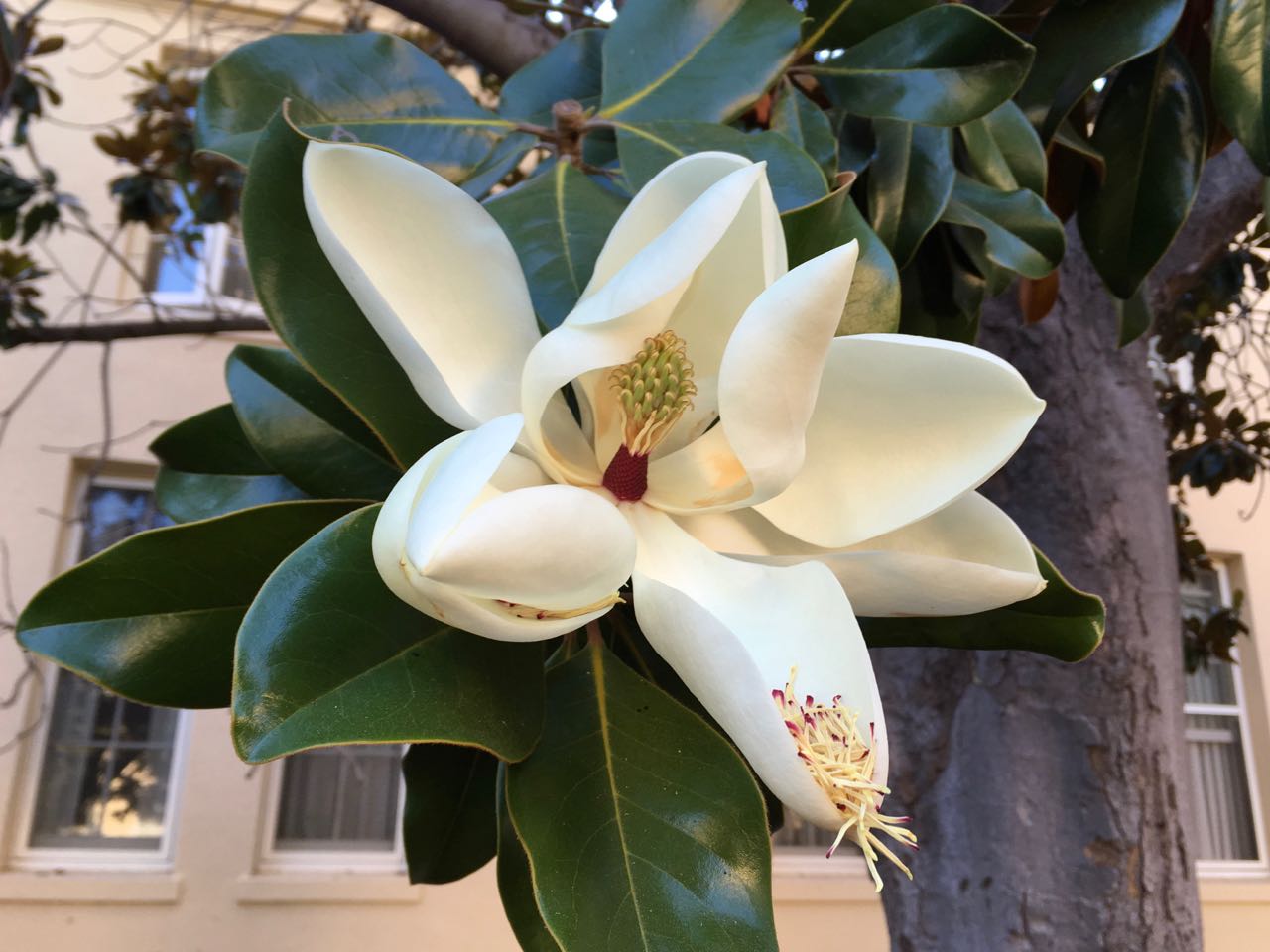
Magnolia grandiflora, southern magnolia Trees of Stanford & Environs
The leaves of the southern magnolia are shiny and oval and can be up to 20cm long. The flowers are also large and a similar size as the leaves. They have an attractive perfume and are a creamy white colour. The flowers end up blooming into summer so you'll have a lengthy period to enjoy them.

Southern Magnolia flower Magnolia grandiflora 20130112… Flickr
Native to the southeastern United States, Southern Magnolia is relatively fast-growing and pest free. Long-lived, its attractive evergreen leaves and creamy-white fragrant flowers make it a popular ornamental and shade tree worldwide in warm temperate and subtropical regions. Its dried leaves are prized by florists in flower arrangements.
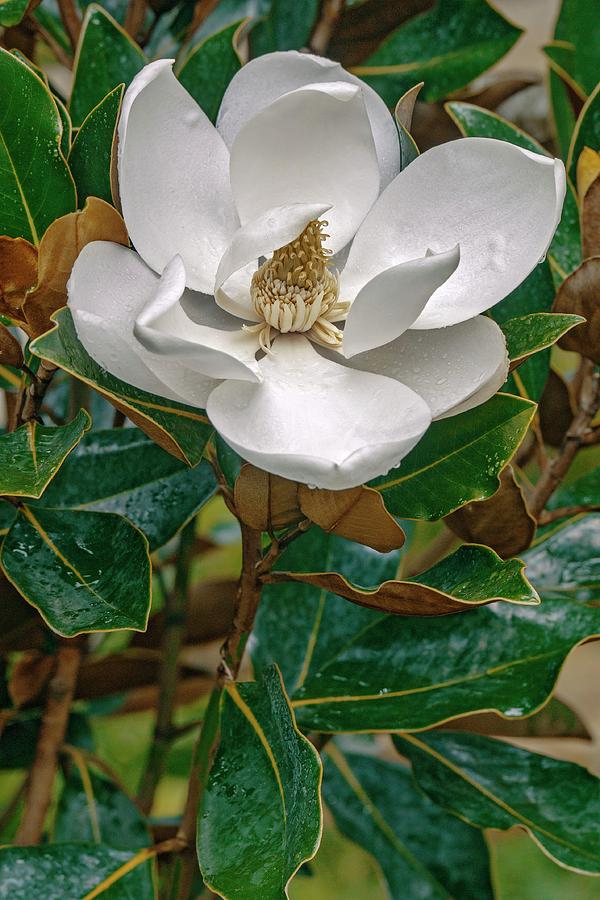
Southern Magnolia (magnolia Grandiflora) Photograph by Dr. Nick Kurzenko Fine Art America
Common Name: southern magnolia Type: Tree Family: Magnoliaceae Native Range: Southeastern United States Zone: 7 to 9 Height: 60.00 to 80.00 feet Spread: 30.00 to 50.00 feet Bloom Time: May to June Bloom Description: White Sun: Full sun to part shade Water: Medium Maintenance: Medium Suggested Use: Flowering Tree Flower: Showy, Fragrant
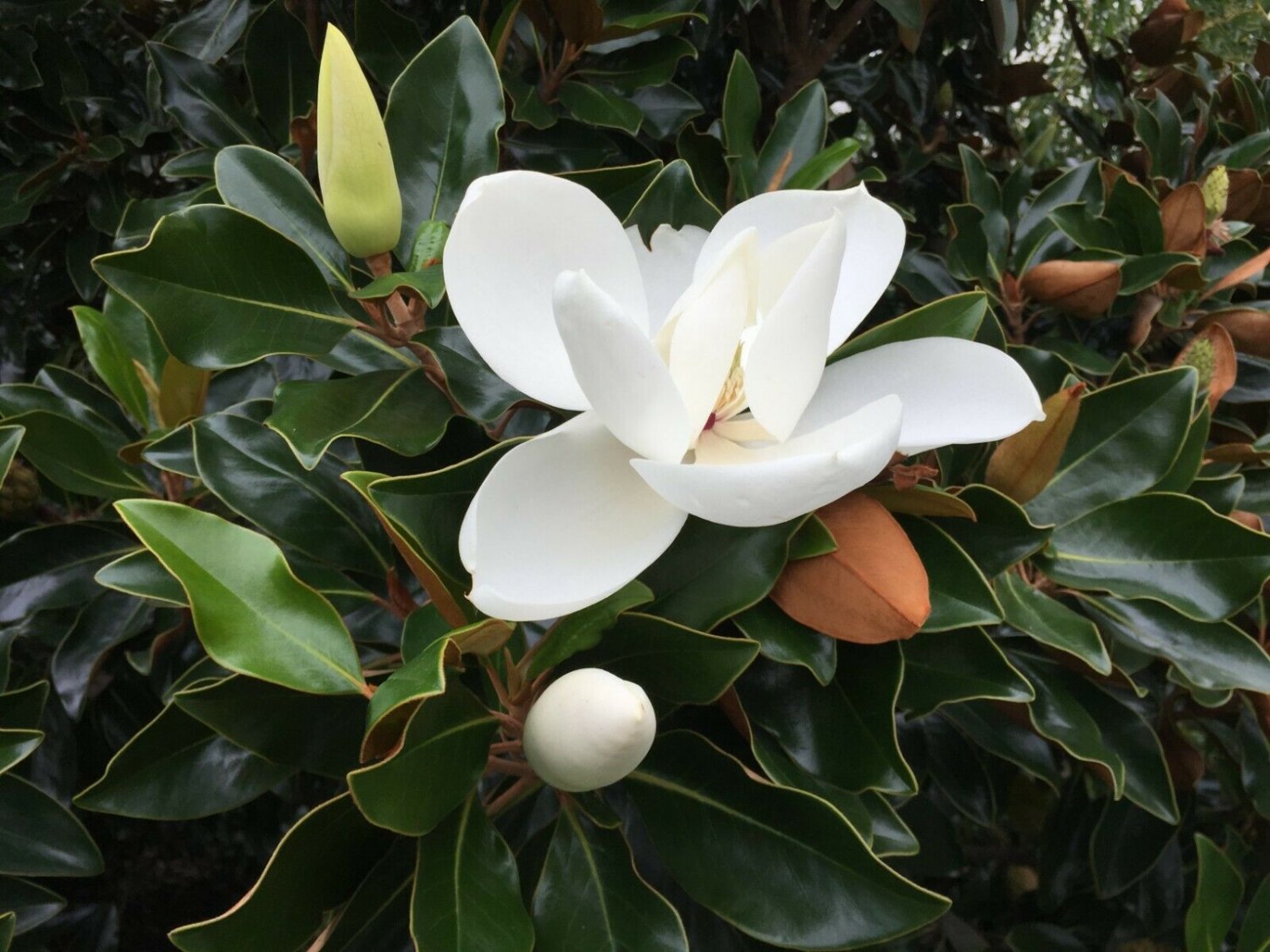
Magnolia Grandiflora Southern Magnolia Tree
Southern magnolia (Magnolia grandiflora) is a magnificent tree cultivated for its glossy, green leaves and lovely, white blossoms. Remarkably flexible for an outstanding ornamental, southern magnolia thrives not only in the south but also in the Pacific Northwest. If you are thinking of planting a southern magnolia tree, you'll want to read.
:max_bytes(150000):strip_icc()/magnolia-grandiflora-growing-guide-5200996-06-60985132deaa465582299ccc7c720b50.jpg)
How to Grow Magnolia Grandiflora (Southern Magnolia Trees)
A distinctive evergreen tree with large, showy, fragrant flowers (citrus scented), the southern magnolia is found throughout the milder regions of the Pacific Northwest. Morhpology: This is an evergreen tree which can attain an eventual height of 60'-80', with a width of 30' to 50'.
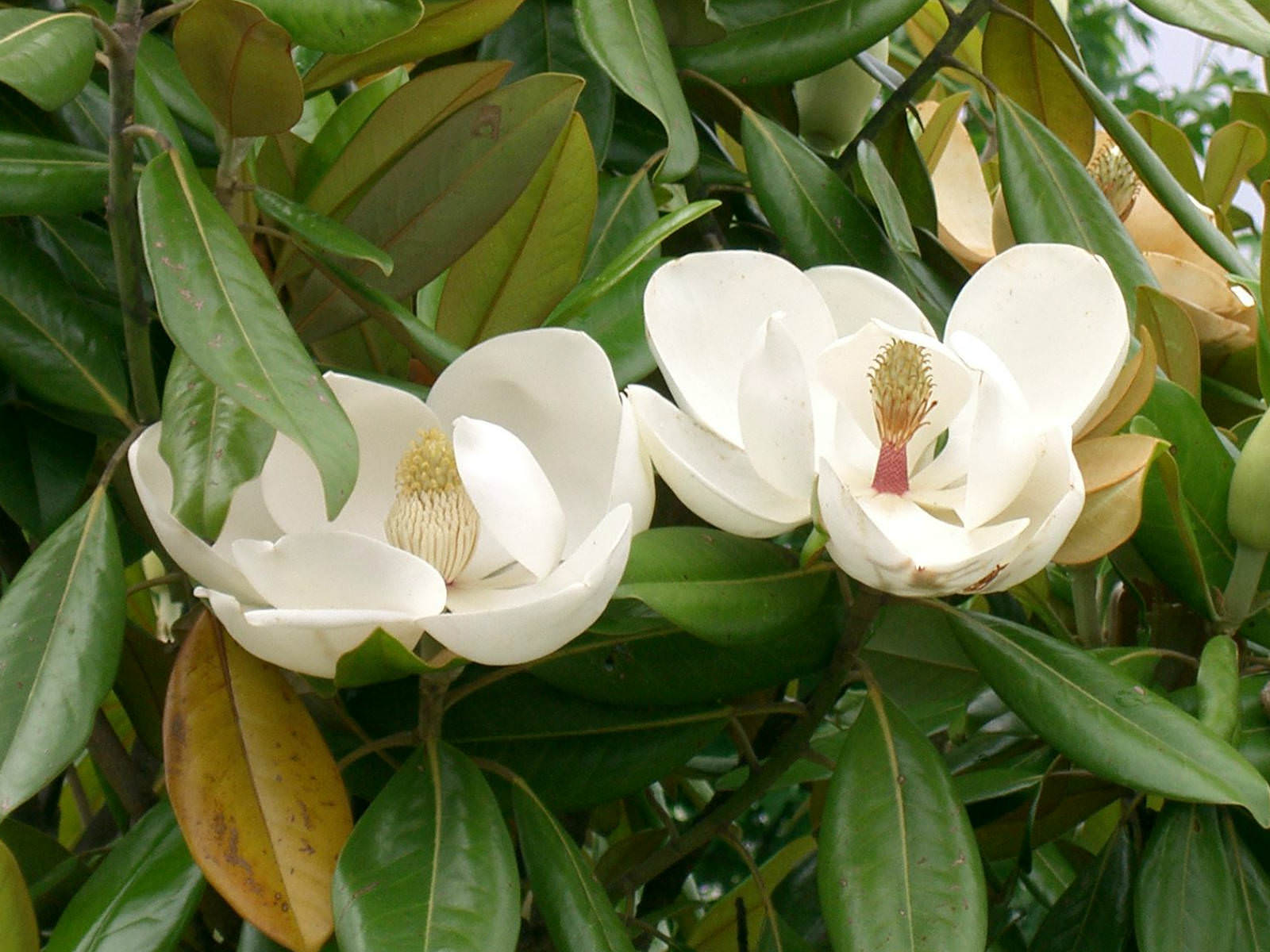
Magnolia grandiflora (Southern Magnolia) World of Flowering Plants
Southern magnolia, is a large, broadleaf evergreen tree that is noted for its attractive glossy dark green leaves and its large, extremely fragrant flowers. It is native to the bottomlands and moist wooded areas in the central and southeastern coastal plains from North Carolina to Florida and Texas.